Mary Wells Changed the Look of Commercial Aviation
Editors note: Mary Wells passed away on 11 May 2024. We remember her life and her industry changing designs in this article.
It was referred to as the most dramatic image overhaul in the history of commercial aviation and it was the brainchild of one woman. In 1965, Braniff International unveiled its ‘End of the Plain Plane’ campaign and introduced Braniff’s Flying Colors across the fleet. The industry would never be the same again.
Braniff’s History
Braniff Airways was founded in 1930 by brothers Tom and Paul Braniff. The airline grew first via an air mail contract granted by the Post Office Department in 1934, then through route awards made to it by the Civil Aeronautics Board (CAB).
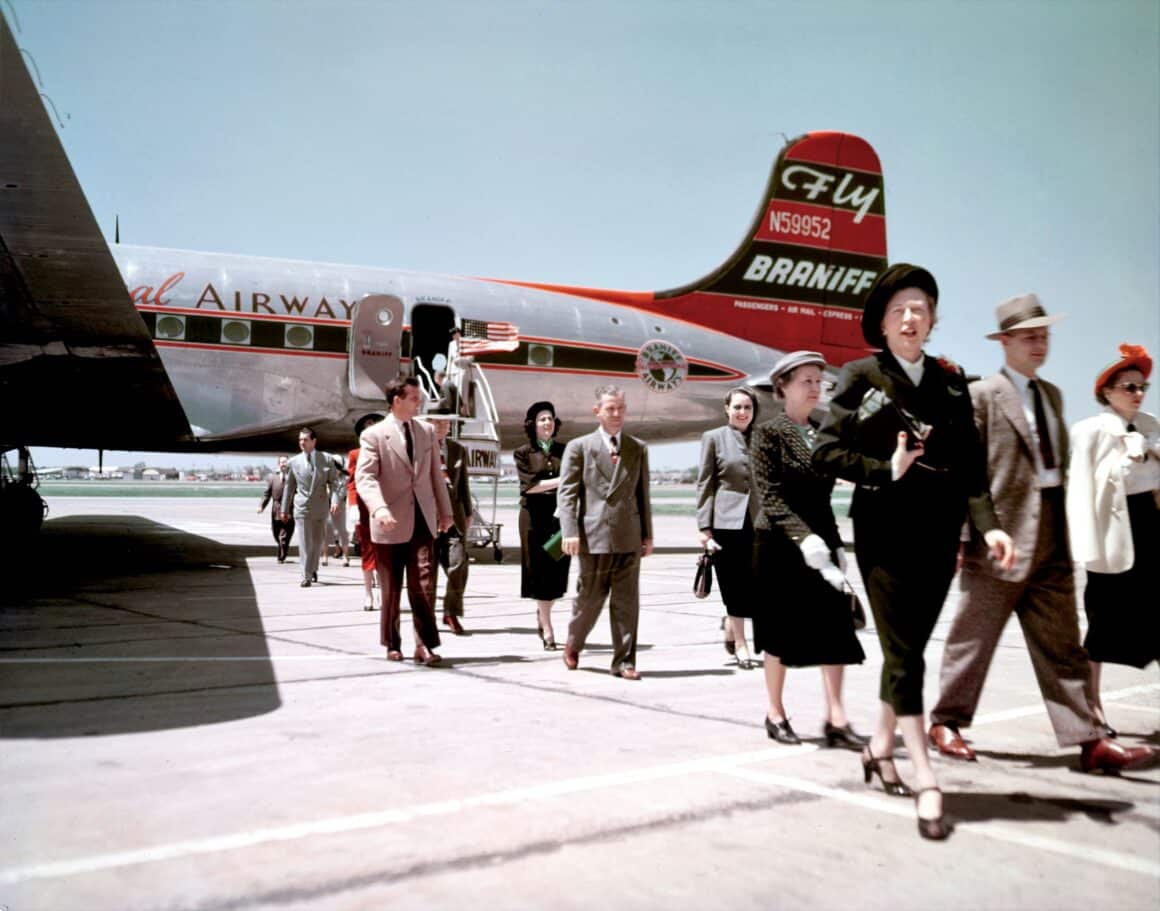
After World War Two, Braniff added ‘International’ to the company name once it was granted approval for service to South America . By 1950, Dallas-based Braniff’s system stretched from Chicago to Buenos Aires.
In 1952, the airline grew even bigger when it absorbed Mid-Continent Airlines through merger and, later in the decade, began transporting customers in the lucrative market between the major cities of Texas and Washington, DC, and New York.
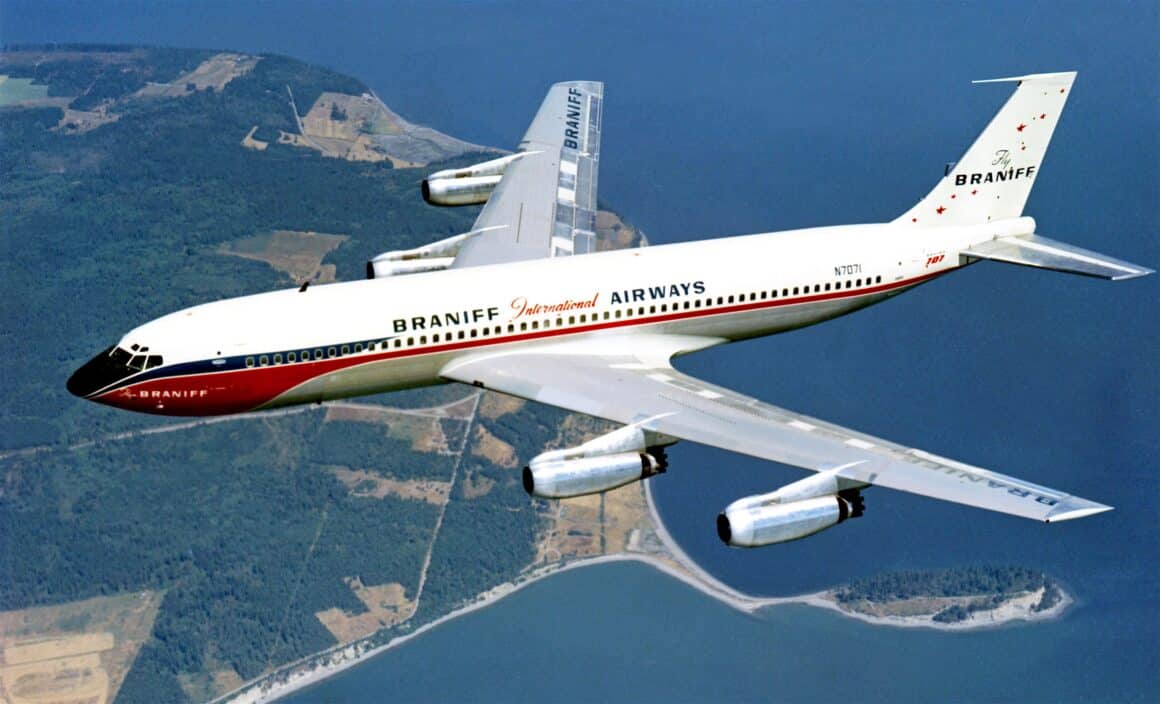
But Braniff was probably the biggest airline that no one out of its service area had never heard of. Its name did not carry the cachet of Pan Am, TWA, United, or American. The term ‘stodgy’ would not have been inappropriate when describing Braniff’s image. It was a conservative and profitable company flying modern aircraft emblazoned in traditional colors – red, white, and blue – with a livery typical of the day. The company name was written in full – Braniff International Airways – across the white crown of the fuselage while the words ‘Fly Braniff’ graced the aircraft tail.
A Change in Management For Braniff
In 1964, Greatamerica Corporation acquired 58% of Braniff’s outstanding stock. Troy Post, President of Greatamerica, recruited 44-year-old Harding Lawrence to run his newly purchased airline and, on April 5, 1965, Lawrence became Braniff’s new president.
Harding Lawrence had been a valuable asset to Robert Six, the president of Continental Air Lines, his former employer. When Troy Post brought him to Braniff, the idea was for Lawrence to shake things up and change the airline’s image from drab to eye-catching. The intention of the new management was to make Braniff’s name familiar around the world with an “imaginative approach to marketing”.

While he was at Continental, Harding Lawrence had met Mary Georgene Berg Wells, an advertising executive with the Jack Tinker and Partners Agency, who had been brought in to help Continental promote its planned purchase of Supersonic Transports. Continental’s SSTs never became a reality, but Mary Wells impressed Harding Lawrence. After moving to Braniff, he hired her and her agency to introduce “color, flair and surprise to air travel.”
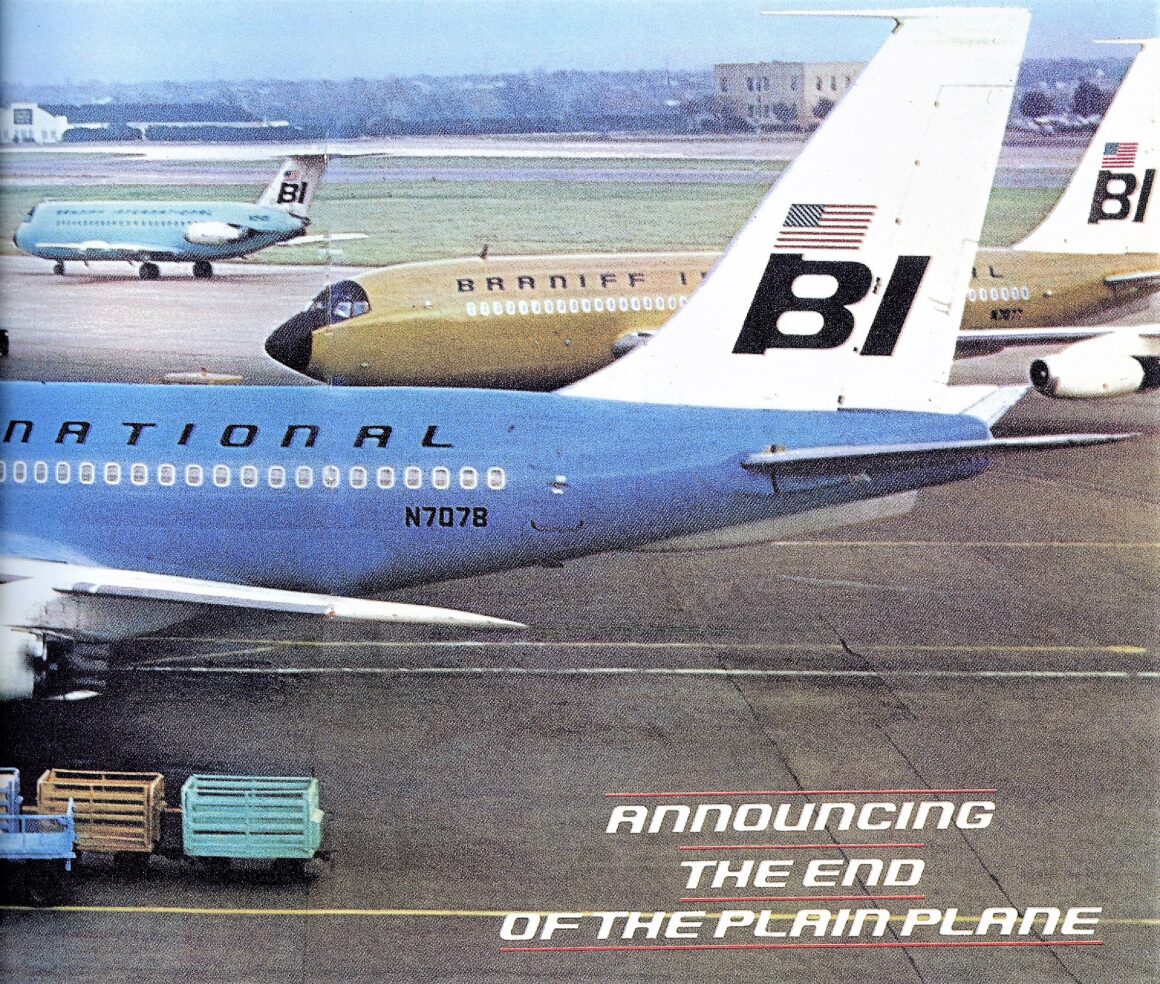


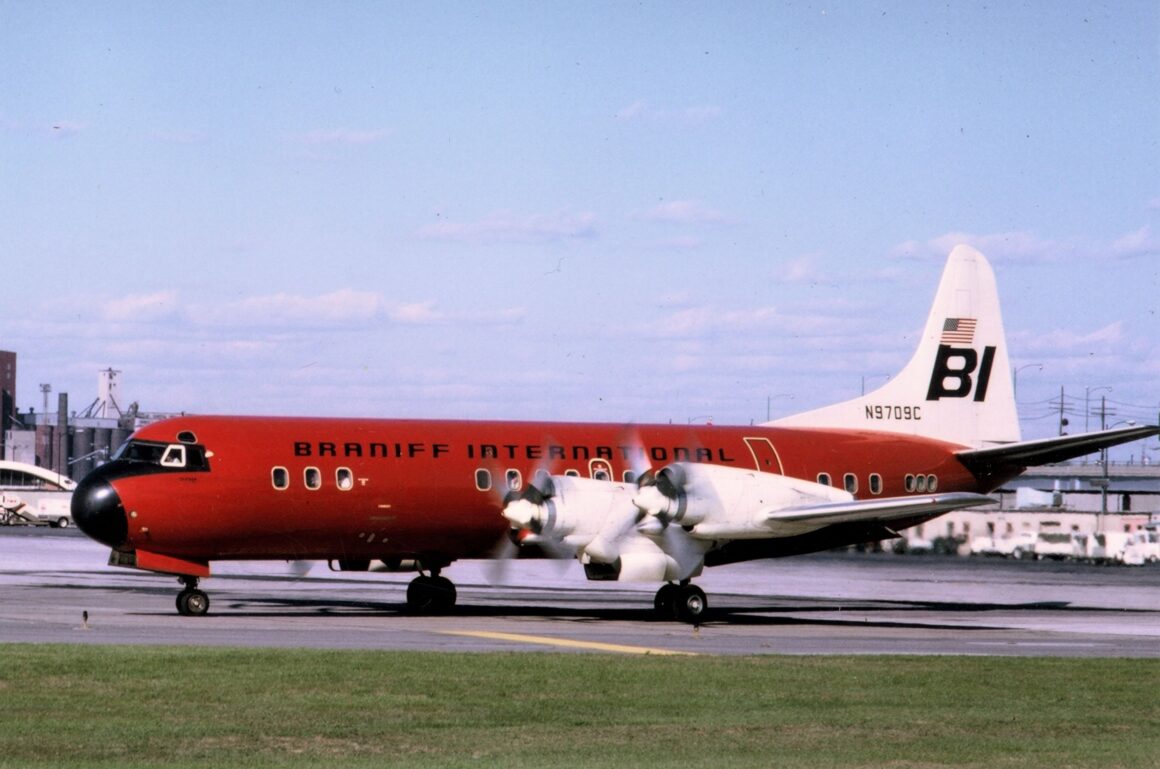
The Birth of Braniff’s Flying Colors Because of Mary Wells
Braniff’s corporate identity was not unlike that of most other air carriers at the time – conventional, and some might say dull. But that was about to change.
The most famous transformation of an airline’s image ever to occur resulted from Wells’ collaboration with architect and artist Alexander Girard, and with fashion designer Emilio Pucci. The ‘new look’ that they created together for Braniff included elements never before seen in an airline’s portfolio.
On Point 1960s Fashion
Aircraft were painted in bright Easter egg colors. Flight attendants dressed in uniforms that incorporated a plastic space bubble hat called the RainDome. The same uniform included several layers that could be removed in flight, which Braniff cleverly advertised as the ‘Air Strip’. Ground equipment and facilities were given a new look and even the mechanics donned redesigned uniforms.

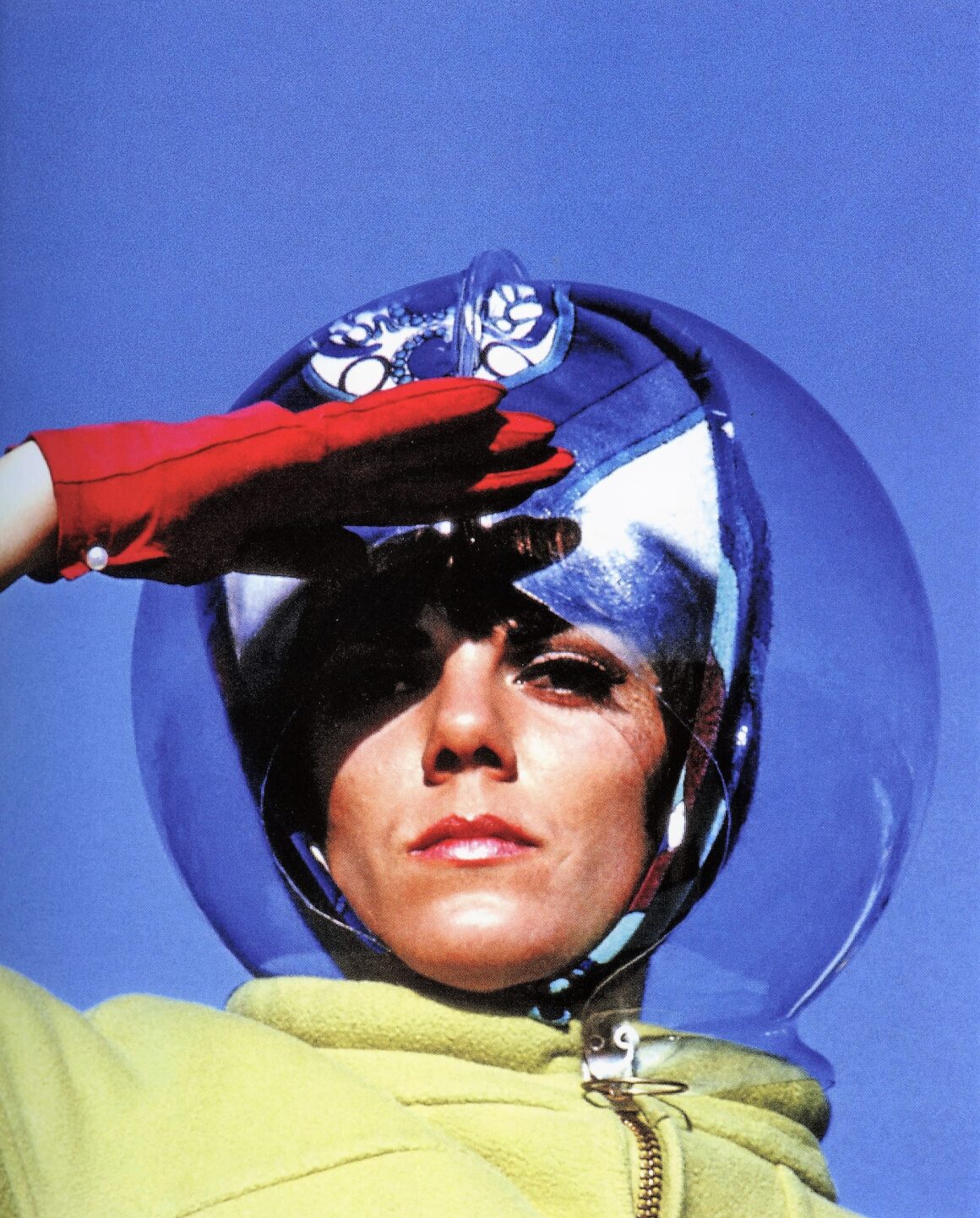
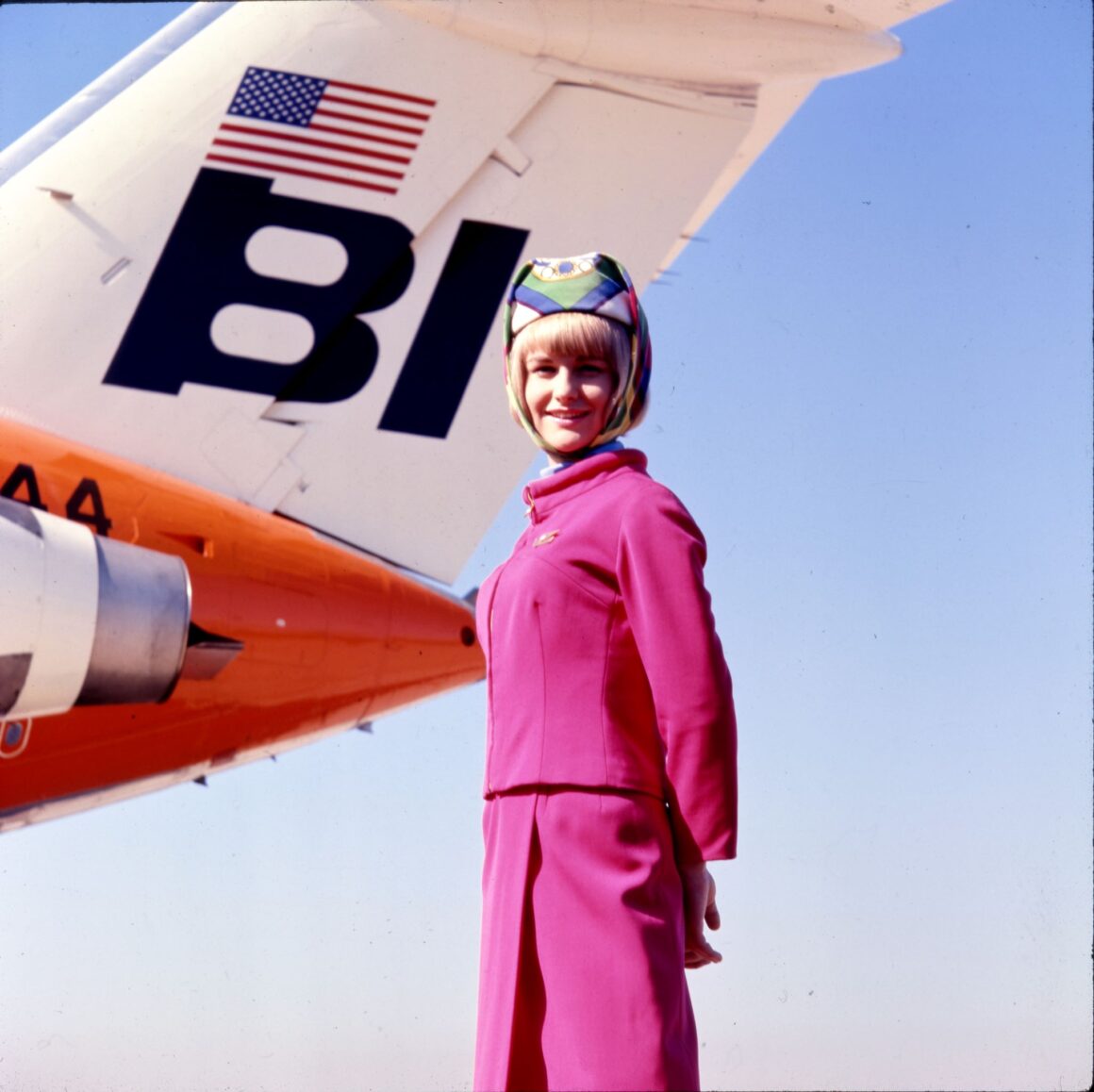
Braniff dropped the word ‘Airways’ from the company’s informal title. The airline began marketing itself simply as Braniff International, or BI.
The entire makeover, introduced in November 1965, was referred to as the ‘End of the Plain Plane’ campaign. It served its purpose as Braniff’s name recognition increased worldwide. Even today, casual airline observers remember Braniff’s Flying Colors livery and fashion.
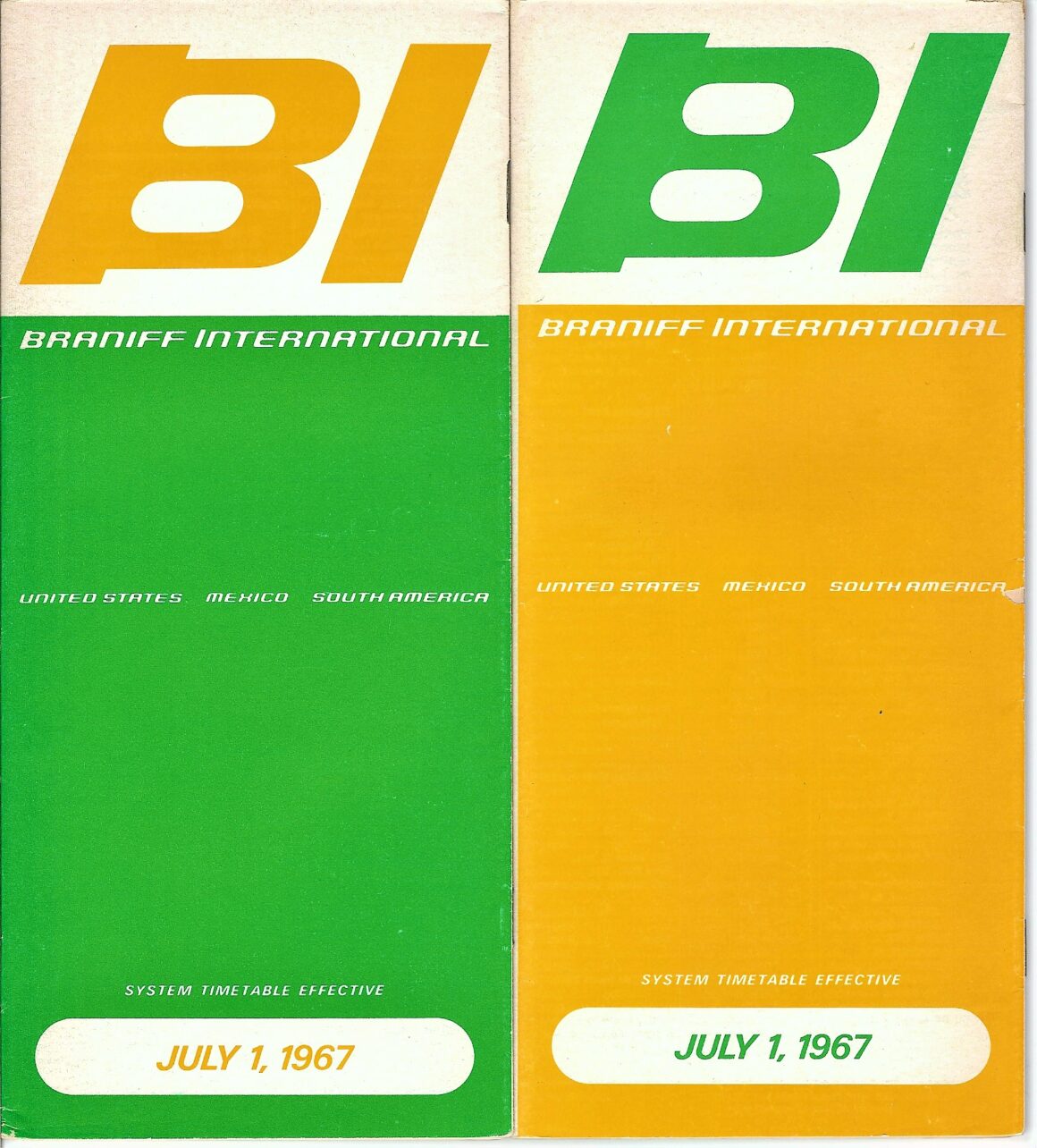
Rapid Growth at Braniff
Braniff Airways had grown from a small Midwestern operation into one of America’s largest airlines but, before the end of the 1960s, the company would grow even bigger by absorbing its former rival on South American routes, Pan American-Grace Airways – PANAGRA.
Mary Wells Started an Ad Agency In the ‘Mad Men’ Era
Mary Wells started her own ad agency – Wells, Rich & Greene – in 1966, at the height of the male-dominated ‘Mad Men’ era of advertising firms. And, in fairy tale fashion, Harding Lawrence wound up marrying Mary Wells in 1967. Referred to as America’s corporate sweethearts, Lawrence and Wells stayed together until his death in 2002.
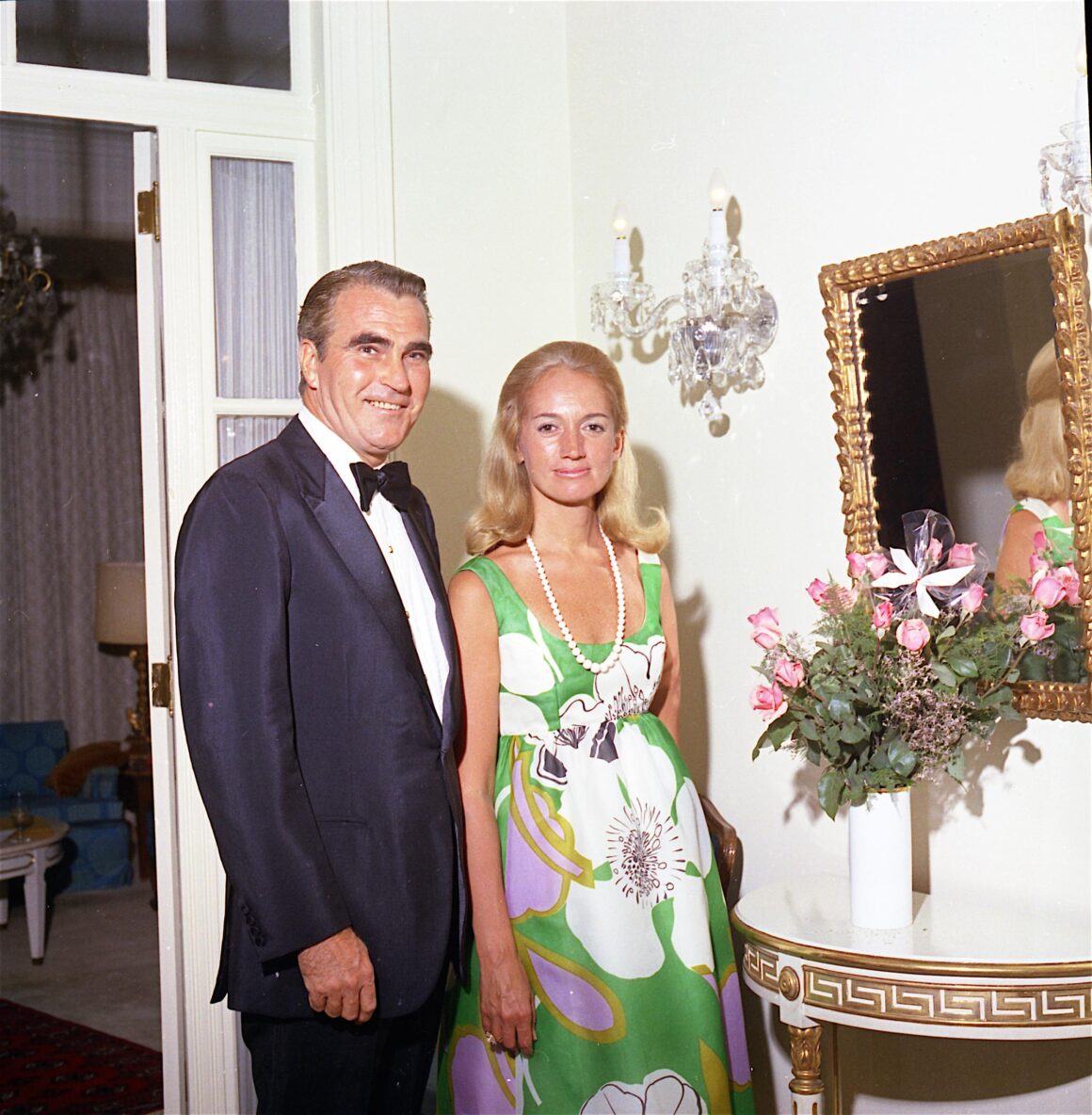
Mary Wells Lawrence, now retired and in her nineties, left her mark on an industry where airline liveries and corporate identities would never be the same again. In 2020, she was awarded the Lion of St. Mark, a prize given to one person each year by the Cannes Lions International Festival of Creativity for outstanding contribution to the creative community.
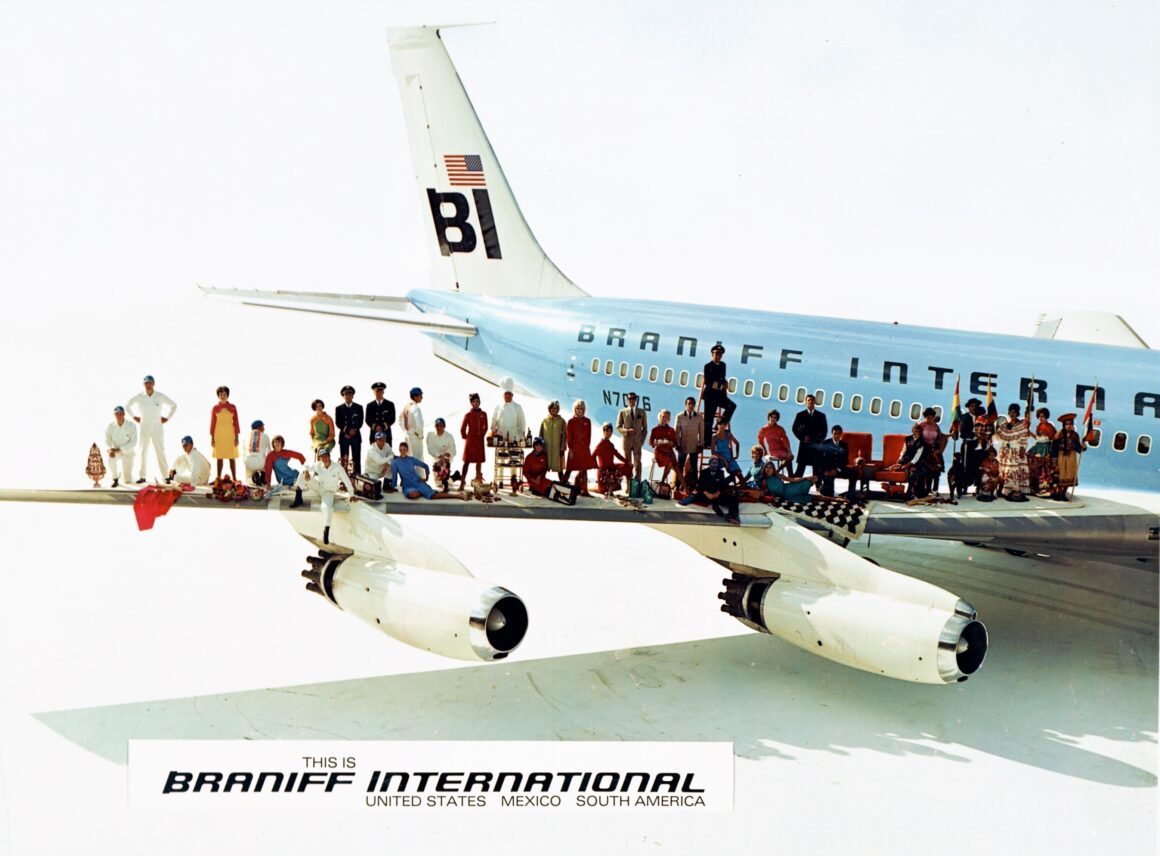
Airline Deregulation and Braniff’s Demise
In 1982, Braniff International became the first significant casualty of airline deregulation when bankruptcy followed over-expansion and the company was forced to shut down. Two subsequent smaller incarnations of the airline both ended in similar failure over the next decade.
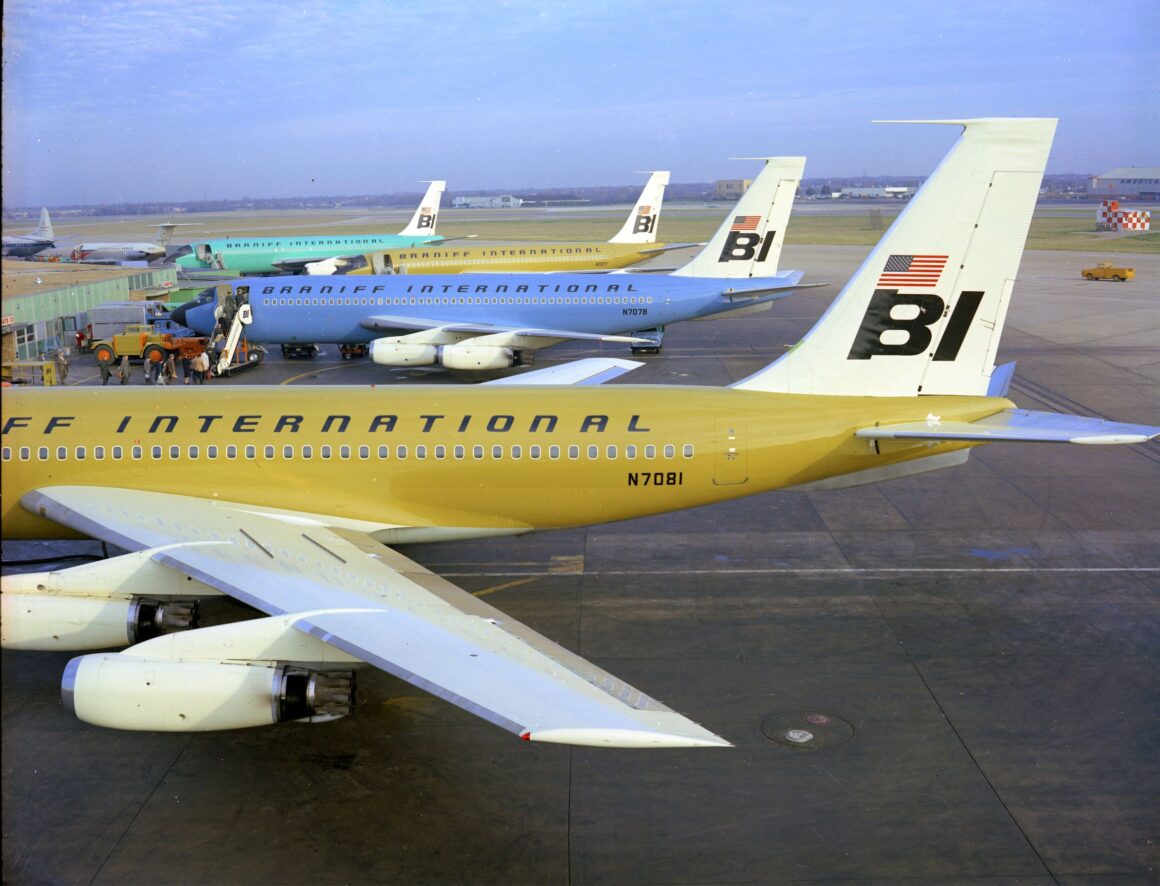

A Note on Photo Credits and the Status of Braniff Today
The author wishes to thank Braniff Airways, Inc., for providing some of the images used in this article.
Braniff Airways, Incorporated, still exists today as a tour firm and hotelier, and manages a portfolio of licensing agreements worldwide that includes aircraft models, posters, high end furniture, textiles, etc.
The company operates its lucrative Braniff Boutique Online Retail store, braniffboutique.com, along with three brick and mortar stores. Braniff also administers its original Employee/Retiree Airline Pass Benefits Program, which offers current and former employees discount travel on partner airlines, cruise lines and hotels. Moreover, The company still assists former employees with pension matters. They also provide aid to Veterans that were exposed to Agent Orange during the Vietnam War.
Braniff Airways supports Braniff Airways Foundation, which is the official repository for Braniff’s historical corporate and employee records, photographs and negatives, and memorabilia. Over 20 million pages (more than half are now digitized) of Braniff corporate documents and 40,000 historical items are included in the Foundation’s Braniff International Heritage Archives, which are housed at three locations in Dallas, Texas.
Braniff Airways has created an endowment at The University of Texas at Dallas to support the Space Sciences Department. An additional endowment has been created to support the administration of Braniff International Heritage Archives.
Contact: Jessica Martin, Braniff Airways, Incorporated: Jessica.martin@braniffinternational.com
